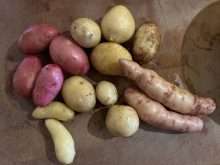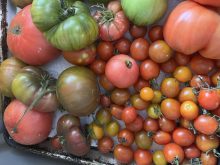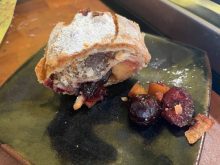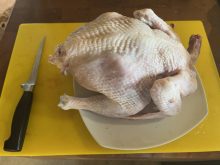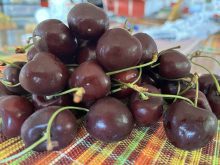Some people prefer to grow flowers and some people prefer to grow good things to eat, but me, I like to do both at once. Edible flower gardening.
Here are good reasons to eat flowers:
- Flowers taste good. Think of peppery nasturtiums, tangy tangerine marigolds, sweet red clover and the blossoms of herbs.
- Flowers are good for you. As tea drinkers already know, flowers have healthy attributes such as calming camomile and echinacea for colds. Flowers from vegetables “going to seed” can have the same nutritional aspects as the vegetable itself, such as broccoli florets gone to flowers and overgrown arugula.
Read Also

Gentle treatments for pain in the neck
Heading toward year-end, people unknowingly tense up against the cold and busyness, causing neck pain that can often be treated with appropriate support and gentle mobility, athletic therapist Kathlyn Hossack says.
Of course, it’s nigh impossible to buy edible flowers at the grocery store (and you should never eat the flowers sold there for esthetic purposes). But lucky for us, culinary flowers are easy to grow. They don’t need much space, they look lovely in the garden and, for those who prefer flowers in the front yard, they do double duty as an edible flower bed.
Here is a list of my favourite edible flowers based on their status in a Prairie garden:
- Perennials: Johnny-jump-ups, borage, thyme, chive, tulips.
- Planted from seed: scarlet runner bean, basil, radish, arugula, nasturtium, zucchini.
- Bedding plants: tangerine marigold, lavender, dianthus (a.k.a. pinks).
- Picked in the wild (or the neighbourhood): clover, wild rose, lilac, caragana.
Some of you may notice the dandelion is not on this list. Back in the day, a great deal of wine was made with dandelion flowers, and I’m a big fan of eating the leaves, but I’ve yet to find a means of serving them for dinner. I’m still looking.
As a note of caution, some garden flowers are considered poisonous, such as potato and sweet pea, so do your own research if you wish to eat a flower not on this list. And never eat a flower that has been sprayed. Above all, my favourite culinary flower is the zucchini. They are sunny in the garden, versatile in the kitchen and, by eating them, the best means of controlling the output of the zucchini harvest. In Mediterranean countries they are stuffed and deep fried, baked in sauces and stirred into risotto. In season, you can find them for sale at farmers’ markets.
Here are a few tips for picking and preparing zucchini flowers. There are male and female flowers. Zucchini grow from the female flowers so don’t pick all the female flowers or you will get no zucchini. On the other hand, don’t pick all the male flowers as they are required to fertilize the female flowers. I like to pick a mix of both. How to tell? Two ways: the inside of the male flower has a single stamen, while the inside of the female flower has a more complex-looking stigma. Also, male flowers are attached to stems, while female flowers are attached to baby zucchini. It’s best to pick zucchini flowers in the morning when they are fresh and wide open so you can insert your fingers and pinch off the stamen or stigma inside. I like to pick the female flowers with the baby zucchini still attached. Do this carefully as the two will separate if roughly handled. Or, you can snap off the flower and leave the zucchini to grow up.
You may be asking, Why is she writing about edible flowers this time of year? Like many of you, I am planning my garden. You can find more ideas for eating flowers on pinterest at ajehman/edibleflowers.
Stuffed Zucchini Flowers
- 6-8 zucchini flowers
- 2 tbsp. chopped fresh basil (or a mix of herbs such as parsley, thyme, marjoram)
- 2 tbsp. grated Parmesan cheese 1/4 c. good-quality bread crumbs 1/2 c. water or beer
- 1/2 c. flour
- 1 tsp. baking powder
- 1/2 tsp. salt
- Vegetable oil
Stir together the herbs, cheese and bread crumbs. Make a batter with the water, flour, baking powder and salt. The batter should be thick enough to coat the flowers but thin enough that you can roll the flowers in it without tearing them. Add more liquid as needed. Meanwhile, in a saucepan heat 2 in. (5 cm) of vegetable oil on medium high until the surface of the oil shimmers. Cup a flower in your hand and, using a small spoon (I use one of those souvenir teaspoons you find in second-hand stores) scoop some filling into the flower. Fill the body of the flower only, up to the point where the petals separate. Draw the petals together, twirl them closed and set aside. Fill all the flowers before cooking them. Roll each flower gently in batter and slip it into the hot oil. Do not crowd the flowers or they will stick together. Depending on the size of the pot, you will probably need to do this in 2 or 3 batches. When lightly browned on the bottom, flip and cook the other side. Remove cooked flowers and set them on paper towel. Sprinkle with salt (optional). Serve immediately.



